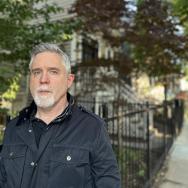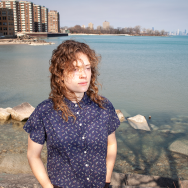In the late 1920s, two University of Chicago sociologists, Ernest Burgess and Vivien Palmer, mapped out 75 community areas in the city of Chicago (two more were added decades later). In the nearly 100 years since they were created, the boundaries of these communities have been largely unchanged.
But are these areas also what residents think? To find out, UChicago researchers led by Emily Talen, a professor in the Division of the Social Sciences, are asking Chicagoans to weigh in through a new public survey.
While researching her book “Neighborhood,” Talen says she discovered the ambiguity of the concept of neighborhoods — even though cities like Chicago often brag about being a “city of neighborhoods.”
“In Chicago, they are not defined in any kind of official way, and, therefore, they lack agency,” she says. “They are convenient geographic locators. Understanding where they are is a first and essential step toward giving them more meaning and impact.”
Talen also underscores how much Chicago relies on these 77 community areas, frequently weaving them into official policies and practices. “But they could very well be artifacts.”
In fact, the original researchers never meant for them to be neighborhoods, but that is how they are being used.
In an effort to update our understanding of Chicago’s neighborhoods, she and her colleagues developed a survey to have residents weigh in on the city’s hyper-local boundaries. Asking for crowd-sourced input certainly isn’t new: DNAInfo (the precursor to Block Club Chicago) did a version some years ago, Talen says, and The New York Times recently produced a version that received 37,000 responses.
“I’m feeling a bit competitive about it,” Talen says. “If New Yorkers are so keen on defining their neighborhoods, why not Chicagoans?”
The survey — offered in English, Spanish, Polish and Traditional Chinese — asks residents to identify Chicago's neighborhoods using an interactive map to create neighborhood boundaries. To further draw interest, participants are entered into a drawing to win one of twenty $50 gift cards.
While neighborhoods can be defined politically, sociologically and in other ways, Talen argues that how a resident sees their neighborhood is the most important definition.
“It’s one way to support neighborhood life — and thus support living local,” she says, “Caring about one’s neighbors, caring about the places around people: Neighborhood awareness is part of sustainability.”
Talen says that to emphasize the importance of place, a baseline understanding of where these neighborhoods are is crucial — and that’s unlikely to come from a map that was produced about 100 years ago.
“I will note that the history of how those community areas were derived in the 1920s is super interesting,” she says. “Teams of researchers fanned across the city doing thousands of interviews and making highly detailed maps. What we are doing is a version of that.”
So far, the response to the survey — which opened Nov. 8 and closes Dec. 31 — has been robust, with thousands of responses. From there, the researchers will collect and report on their findings, which they hope the city itself will note.
The researchers’ goal isn’t to make the map political, but rather that it might inform public investment decisions, resident needs, small business support, social connectedness and more.
“At the very least, we hope to show how resident perceptions of neighborhoods align — or don’t — with the community areas that are now heavily relied on,” Talen says.
Take the Chicago Neighborhood Project survey.
This story was adapted from the Division of the Social Sciences website.

